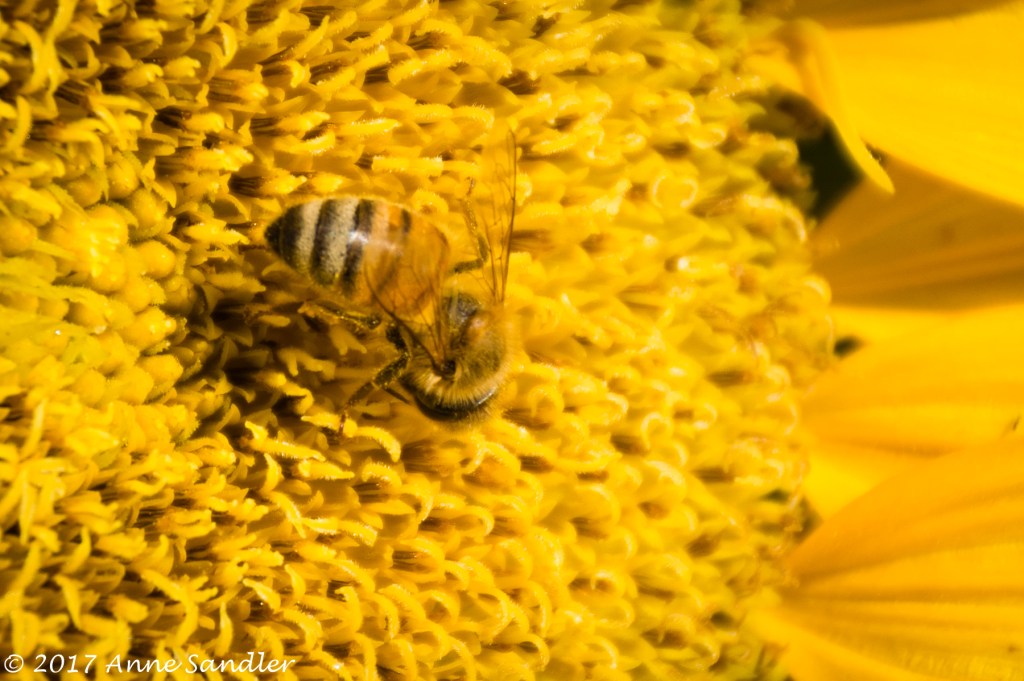Think big! Don’t sweat the small stuff! Did you want to super-size that? In today’s world, we are taught to think BIG. We go for the big SUV, the big sale and the big burger. In photography, we learn to shoot large landscapes with a wide-angle lens.
Donner Lake in Winter
But what about thinking small? Let’s talk about macro photography.
What is macro photography? What is micro photography? Are they different from close-up photography? Have I confused you? I’ll give you a hint, two are the same and one is different. Let’s delve into the subject.
Close-up photography takes a subject and zooms in on it. Usually the subject is small, like a plant or an insect, but it could also mean getting close to someone’s eye or face as a subject. The picture is taken with any lens. I’ve taken close-ups with a nifty fifty on a crop sensor camera.
A close-up image taken with an 18-200 mm lens, shot at F/5.6.
Typically, these types of images fill the frame. However, I’ve put flowers or part of flowers off to the side. Shooting with a 200- or 300-mm lens can give you almost macro quality.
This flower was shot at 200 mm at F/5.6.
Macro photography refers to a picture taken with a dedicated macro lens yielding a magnification ratio of 1:1. Meaning, the image depicted on your camera’s sensor is in its actual size. When printed, the subject appears life-sized. This type of photography is used especially when we shoot something exceedingly small or want to capture an extremely small part of it.
Hint: If you want just part of a subject in focus, use a lower F stop (meaning F/number) to get the entire macro subject in focus, use a higher F stop.
The praying mantis in this image appears life-sized as does the part of the flower it’s feeding on. It was shot with a 105 mm macro lens at F/16.
The leaf in this image was shot with the same macro lens, but at F/2.8 creating a more shallow depth of field.
Micro photography is the same as macro photography. Camera manufacturers use the terms interchangeably. You might say that a macro lens takes a picture of a micro subject! I borrowed that last phrase!
One big difference between close-up and macro shooting is breeze. For close-ups you can shoot in a slight breeze because the regular lens isn’t as sensitive as a macro lens. When shooting with a macro lens, any movement in the subject will result in blur. Often, I’ll just take my 55-200 mm lens out when there’s a slight breeze. I can still get nice close-ups.
Oh, yes, everyone says you need a tripod. Confession, I’ve never used one for macro. In fact, I hardly use one at all. However, you will need a steady hand and fast shutter speed.
Now we’ve covered the macro, micro and close-up differences, and you are wanting a macro lens, let’s talk about options. Macro lenses are expensive but there are less expensive alternatives. Extension tubes or reverse ring adaptors to turn your regular lens around are much less expensive options. Personally, I decided against either option and bought a used macro lens for my Nikon D7100. When buying used, be careful. Buy from a store that will let you return it within 90 days if not satisfied. Also purchase one that will give you a 1:1 ratio.
For my Fujifilm camera, I treated myself to a new macro lens, knowing I would use it a lot. It’s a prime 80 mm but still shoots at a 1:1 ratio.
So, which two are the same and the other different? The answer: macro and micro photography are the same and close-up photography is different!
This week’s challenge is to take your camera for a walk around your yard or home and shoot some close-up or macro shots. Too cold, too wet, too busy? Feel free to choose some images from your archives. Be sure to link your response to my original post, and to use the Lens-Artists TAG to help us find you. I’m looking forward to seeing what you come up with.
Thank you Tina, Amy, Ann Christine and Patti for this amazing guest host opportunity!





Thanks for hosting this week – here is my submission
https://norasphotos4u.wordpress.com/2021/01/14/lens-artists-challenge-its-a-small-world/
LikeLike
A well illustrative post Anne.
LikeLike
Thank you Rupali!
LikeLiked by 1 person
Nice to learn something as well as enjoying reading the blog. Most interesting.
LikeLike
Thanks Maris!
LikeLike
Your photos are gorgeous. I especially like the mantis one.
LikeLike
Thank you Geri! And thanks for following my blog.
LikeLiked by 1 person